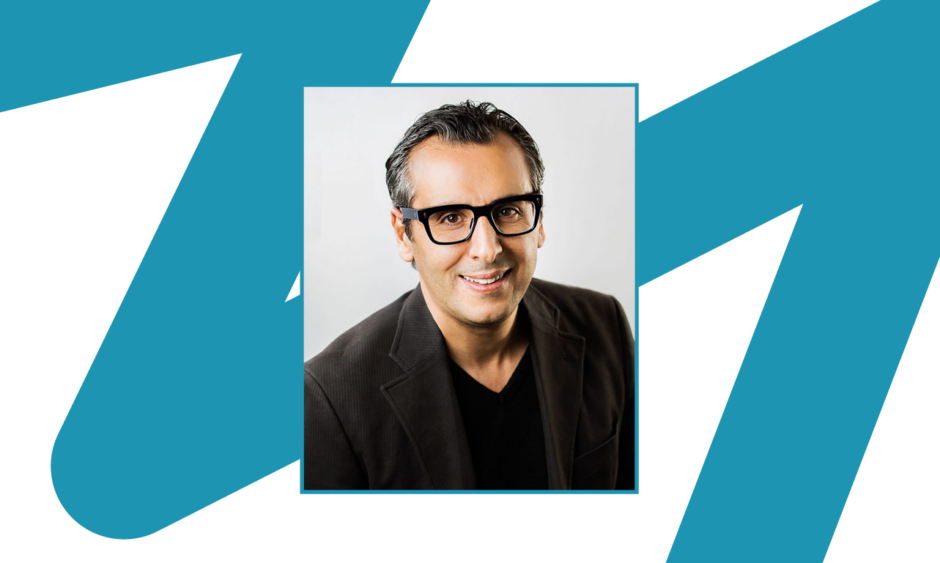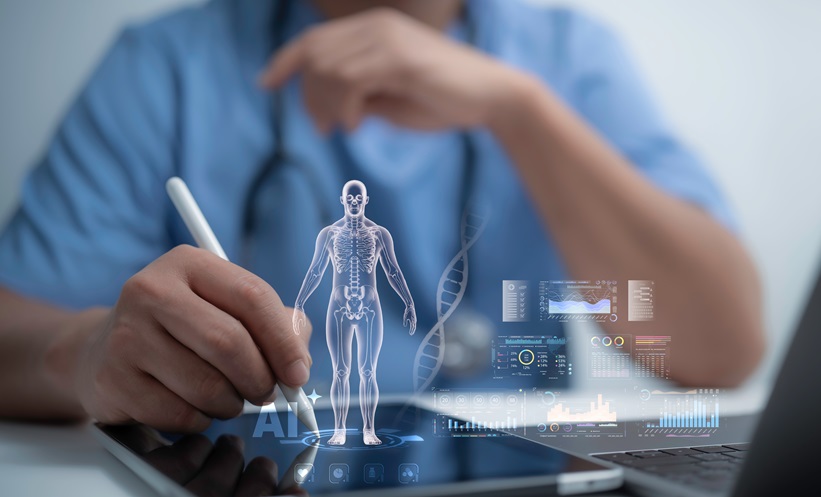Nassir Marrouche | Tulane Research Innovation for Arrhythmia Discovery Center (TRIAD), Heart and Vascular Institute, Division of Cardiovascular Medicine, Department of Internal Medicine, Tulane University School of Medicine, New Orleans, Louisiana, USA; Vice Chair of Innovation and Entrepreneurship, Deming Department of Medicine, Tulane Innovation Institute, Tulane University.
Citation: EMJ Innov. 2023;7[1]:27-32. DOI/10.33590/emjinnov/10308893. https://doi.org/10.33590/emjinnov/10308893.
![]()
EMJ is proud to present an interview with Nassir Marrouche, a globally renowned electrophysiologist and researcher currently directing a collaborative team of specialists to optimise prediction, prevention, and outcomes for cardiovascular disease (CVD) by pioneering research into digital health (DH) solutions.
What factors influenced your decision to undertake a career in cardiology, and subsequently to sub-specialise in cardiac electrophysiology?
I have always been passionate and intrigued about electrophysiology and, with time, the more I learned about it, the more fascinating it became. It truly challenges physicians to figure out the best-case scenario that each patient could benefit the most from. With atrial fibrillation (AF), considering how common it is and how invalidating it can be for patients in some cases, I realised that we, as physicians, still have a long way to go, and have plenty of room to innovate and find optimal treatment strategies. Throughout my clinical experience, witnessing the positive impact patients were able to achieve, and listening to their success stories about how their lives changed, and how they were able to resume the activities they loved after AF treatment has always been extremely rewarding and motivating.
Having worked in multiple countries, including Germany, the USA, and UK, throughout your training and career, where did you gain some of the most valuable experiences for you to have achieved all that you have today?
I have had the chance to work in different academic and clinical environments, and for that I consider myself privileged. Each country had its own values, health system, and work ethics. Germany is a great place for academic development and that was where I met my mentor. The USA rightfully deserves its reputation of being the land of opportunities. Being exposed to all of that really pushed me to broaden my perspective, taught me to adapt quickly to change, and to grasp a good opportunity when I see one.
What initially drove you to take part in clinical research alongside your role as a physician?
I have always known I wanted research to be a big part of my career. Novelty, curiosity, and technological advancement are the drivers that keep changing the landscape of how we treat our patients. Clinical medicine will never be replaced, but research and innovation are the ultimate path that leads to improvement of care and outcomes. If it were not for research and for brave physicians who dared to ask questions that initially seemed too challenging, we would not have witnessed the breakthroughs that made modern medicine what it is today.
Could you tell our audience more about Tulane Research Innovation for Arrhythmia Discoveries’ (TRIAD) aims, mission, and vision for the future? What does your role as Director involve?
TRIAD is a multi-disciplinary research department aiming to improve the management and outcomes for patients with AF by innovating the way we screen and monitor them, as well as by detecting the early signs of the disease to stop the progression of atrial fibrosis before it reaches ‘the point of no return’. We are launching a full-on DH department in collaboration with the School of Medicine at Tulane University, New Orleans, Louisiana, USA. We envision a future where we can achieve prevention and early detection of CVDs through DH solutions, sophisticated cardiac imaging, genetic studies, and personalised treatment plans that are tailored to improve patients’ outcomes and quality of life.
As the director, I try to empower my team and inspire them to think outside of the box. Beyond supervising and mentoring, my role also involves pushing the limits to show that a broad range of opportunities to innovate lays ahead. I am also certainly here to learn, and to make sure that the conversation and energy throughout our team is constantly circulating and never one-sided.
Collaborative research is a key component of the work undertaken at TRIAD. What are the aims of the multi-disciplinary team you work with to achieve TRIAD’s objectives, and how did you initiate this cross-departmental workforce?
I think our cross-departmental workforce is truly one of our biggest strengths. We are a team of experts in a variety of fields ranging from artificial intelligence (AI) engineering, specialised cardiac imaging, DH, and RNA sequencing, to electrophysiology and cardiovascular risk management. This multi-disciplinary approach broadens our perspective and makes us tackle questions from many different angles to try to come up with the most beneficial solutions for our patients.
Our aims can be divided into three core concepts: early detection, characterisation, and management of AF and fibrosis through cardiac imaging, and AI-based analyses; the optimisation of prediction, screening, monitoring, and remote management strategies of arrhythmias and additional cardiovascular comorbidities through DH tools; and challenging the status quo of current ablation techniques by discovering evidence-based innovations that are linked to better and safer outcomes.
Earlier this year, you published data from the DECAAF II randomised clinical trial. What were the details of this trial and what were the key take-away messages from it?
The DECAAF II trial compared two ablation techniques in patients with persistent AF. All 843 patients underwent late gadolinium enhancement MRI pre-ablation to assess for baseline fibrosis. They were then randomised to pulmonary vein isolation (PVI)-only versus PVI plus MRI-guided fibrosis ablation. The two arms were compared for arrhythmia recurrence and scar formation evaluated by late gadolinium enhancement MRI 90 days post-ablation. Monitoring for recurrence was done via a single lead digital ECG device, which patients had to use at least once daily. There was no significant difference in atrial arrhythmia recurrence between groups (fibrosis-guided ablation plus PVI-treated patients: 175 [43.0%] versus PVI-only treated patients: 188 [46.1%]; hazard ratio: 0.95 [95% confidence interval: 0.77–1.17]; p=0.63).
The trial pointed out many key-messages that we as electrophysiologists are yet to address, including that fibrosis lesions in the left atrium vary by their distribution, extent, and pathophysiology, which implies that not all lesions can be treated the same way; scar formation involves complex mechanisms that are unique to each ablation lesion, while lower baseline fibrosis <20% lesions were associated with higher quality scar formation; and MRI-guided fibrosis ablation was performed in a variety of centres by a multitude of operators. The approach was hence essentially operator dependant and not reproducible. Fibrosis coverage by ablation lesions ranged from <20% to >80%.
What topics do you feel merit greater attention in your specialty and what direction would you like to see future research take?
Over the past few years, we have been witnessing great advancements in cardiac catheters development. I think it is also time to focus not only on how we ablate, but also where we ablate (i.e., on determining which ablation target points of the left atrium are predictors of better outcomes). With specialised cardiac imaging sequences, left atrial mapping techniques, and databases of pre- and post-ablation MRI images of the left atrium such as the DECAAF II database, AI algorithms can show us which specific ablation points would constitute optimal targets and yield improved outcomes and safety.
Another topic that warrants attention, is the reversal of fibrotic atrial remodelling before it reaches an advanced irreparable stage where the management of AF becomes particularly challenging.
From your work exploring DH innovations for CVD prediction, prevention, and outcome improvement, what are the top three things that clinicians can do to help predict or prevent CVD?
It is well established that today DH innovations can detect diseases. The next step is to prove their predictive powers, which, in my opinion, is where their biggest potential lies. Researchers’ and clinicians’ participation in prospective monitoring of digital health parameters in large populations, and correlation of those findings to disease incidence rates, is a way to achieve that. Clinicians also play an important role in introducing their patients to the world of health technology. By showcasing which benefits those solutions can bring to patients, doctors can leave a positive impact on patient willingness to engage with DH technologies. They can hence serve as a bridge to help newcomers step into the digital world. Patients are naturally more likely to trust these technologies and accept to share their personal health data after they have been reassured by their treating physicians.
A third important issue that clinicians and researchers need to be aware of is that maintaining patient compliance to DH technologies is often challenging. We have witnessed a drop in compliance and adherence rates overtime in several of our research projects involving digital tools. So, in collaboration with device manufacturers, clinicians can help determine which strategies improve and sustain patient compliance.
Are there any digital innovations on the horizon within the field of cardiology that you feel are particularly noteworthy, or are likely to have significant impact?
Photoplethysmogram (PPG) signals are a promising field that are yet to be fully explored. The PPG bio-signal is scalable and easily measurable through a variety of non-invasive methods. One of its most interesting features is the possibility to record dynamic measurements. It can inform us about a variety of cardiovascular parameters: blood O2 saturation, heart rate, heart rhythm, blood pressure estimation, cardiac output, respiration, arterial ageing, endothelial control, microvascular blood flow, autonomic function, cardiorespiratory fitness, etc. The wealth of information that can be drawn from each section of the signal creates room for countless possibilities to innovate. Using AI algorithms, we can analyse PPG signals and see which subclinical diseases they correlate to. So, beyond surveillance and monitoring, the strongest impact that the PPG technology can have relies on its predictive abilities.
Can you tell us which of your upcoming projects you are most looking forward to?
The TIPP study will include 300 patients from Louisiana, USA, who will be monitored for 1 year using continuous ECG and PPG, and comparative baseline and 1-year cardiac MRIs. These parameters collected over a 1-year period will be correlated with onsets of CVD and assessed for predictivity. Another innovative project is EchoPPG, which consists of simultaneous measurements of the PPG signal alongside performing a cardiac ultrasound. Results from both measurements are then analysed to test whether PPG signals can indicate a decreased left ventricular ejection fraction.
On another note, we are developing a virtual cardiac rehabilitation platform, which aims to deliver comprehensive cardiovascular management through exclusively remote digital solutions. Finally, one of the projects we’re most excited about is CASTLE-AF II. This trial will include patients with AF and heart failure with preserved ejection fraction, randomised into three arms: rate control, medical rhythm control, and catheter ablation. Using our LGE MRI technique, left atrial and left ventricular fibrosis will be assessed. Thus, we aim to optimise patient selection for AF treatment, and establish correlations between the extent of myopathy, QOL, and hard outcomes.
What do you anticipate will be the most significant challenges or barriers to improving cardiovascular health using digital innovations in the future?
Digital innovations are meant to increase access to quality healthcare in a more convenient setting for both patients and clinicians. Unfortunately, most products are often considered expensive by most patients, which adds yet another barrier in front of them. That is why it is important to prove, through evidence-based research, that DH interventions improve outcomes in a cost-effective manner. Insurance companies and other covering entities would thus be convinced to reimburse for these types of interventions, making it accessible for patients from all socio-economic backgrounds.
Another barrier is digital literacy: many vulnerable or elderly patient populations have never been introduced to DH devices. We need to make sure they too are included and considered target consumers. By training and empowering patients, and advocating for reimbursement, we can prevent the widening of healthcare access gap.
To conclude, can you tell us what has been your proudest achievement in your incredible career so far?
It is always difficult to answer this question. But I can say that successfully completing several randomised controlled trials (such as CASTLE-AF, DECAAF, and DECAAF II), with the amazing co-investigators and the teams that I got to work with, was definitely hard work and required discipline, collaborative efforts, and perseverance. For that, I am extremely grateful and proud. Another part that I particularly love about my job is that it allows me to empower young researchers. In fact, we are currently collaborating with the Tulane Innovation Institute to create a hub of inspiration, support, and empowerment for young local innovators. Being a part of that, and witnessing the youth’s successful achievements a few years down the line, is priceless.








